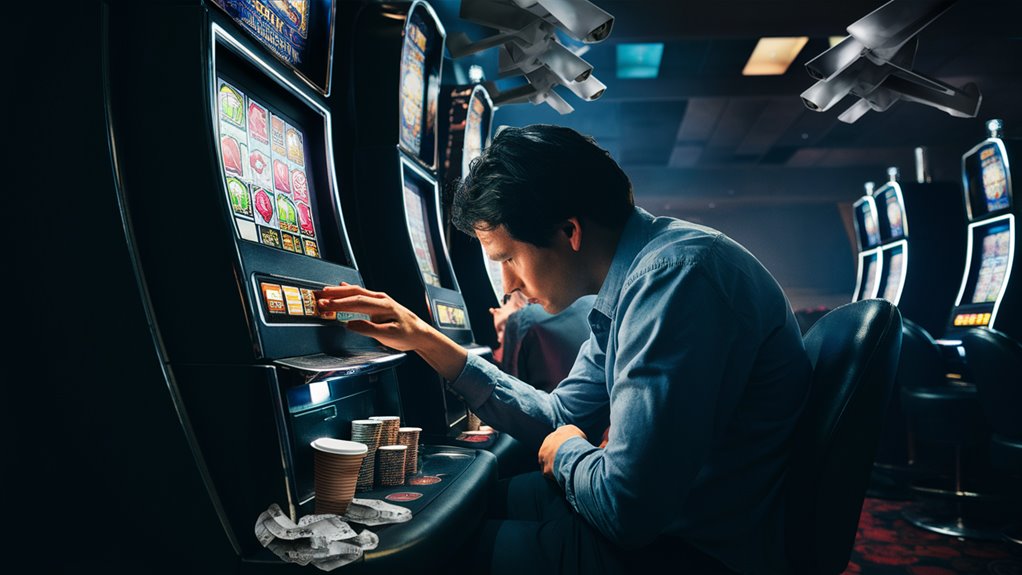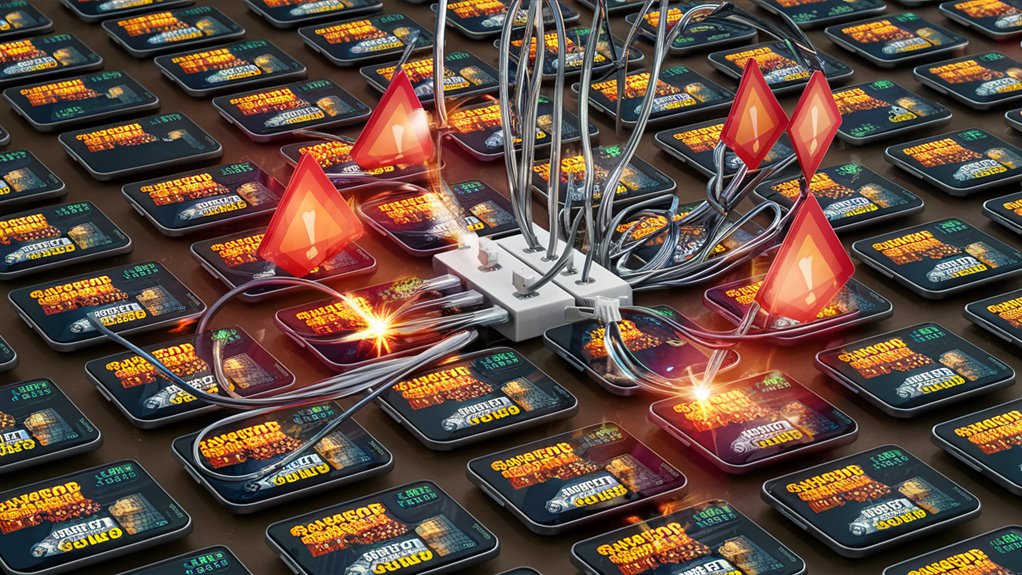
Read Time:2 Minute, 19 Second
카지노 플레이어가 마이크로 베팅 중독 패턴에 빠지는 과정과 카지노가 사용하는 심리 전략
마이크로 베팅의 심리학: 중독 패턴의 이해

현대 카지노의 중독 설계 구조
- 2~3초 간격의 베팅 기회: 도파민 분비 유도 및 위험 인식 억제
- 저금액 베팅 옵션($1~$2): 경제적 부담 최소화 착각 유도
- 게임 세션 연장: 감정 피로 없이 장시간 플레이 가능
환경적 조작 요소
- 시계·자연광 제거로 시간 인식 왜곡 (25~40% 시간 과소평가)
- 사운드 디자인 및 조명 최적화
- 적정 온도, 산소 수준, 방향제 통한 뇌 자극 조절
마이크로 베팅 트리거의 신경학적 작용
- 도파민 보상 루프 형성 → 반복 베팅 강박 강화
- 빠른 결과 노출 → 실행 기능 억제 및 충동 증가
- 베팅 빈도 증가로 보상 기준 상승(신경가소성 반응)
핵심 중독 요소
- 도파민 과잉 활성화
- 시간 압축 효과로 인한 판단력 저하
- 보상 자극 기준 상승
손실 추적 행동 강화 메커니즘
손실 추적 3단계 진행
- 1단계 – 손실 인식: 코르티솔 증가, 판단 능력 저하 시작
- 2단계 – 인지 부조화: 전략과 감정 사이 갈등, 감정 우위 형성
- 3단계 – 한계 포기: 자금 계획 및 베팅 전략 완전 이탈
신경 반응 및 결과
- 전두엽 기능 억제 → 충동적 베팅 급증
- 실행 능력 저하 → 손실 회복 집착 심화
시간 왜곡 현상
시간 인식에 미치는 영향
- 시계 부재 + 동일 조명 환경 → 뇌의 시간 추적 기능 억제
- 뇌 시계(SCN) 기능 저하로 수면 리듬 및 판단력 손상
- 마이크로 베팅 시 25~40% 시간 과소평가
행동 결과
- 예상보다 긴 플레이 시간
- 리스크 인식 감소
- 피로 누적 및 생리 주기 혼란
근접 실패 효과와 베팅 강화
근접 승리의 뇌 반응
- 도파민 반응은 실제 승리와 거의 동일
- 감정 흥분 증가 → 베팅 지속 확률 30% 증가
마이크로 베팅과 근접 실패의 결합 효과
- 근접 승리 빈도: 전체 결과의 12~15%로 설계됨
- 강화 압축(Reinforcement Compression) → 빠른 근접 실패 노출로 중독 강화
도파민 패턴과 반복 베팅의 신경 회로
중요한 신경학적 반응
- 배팅 행위 자체가 도파민 유도(결과와 무관)
- 측좌핵(nucleus accumbens) 활성화 → 보상 회로 지속
- 보상 예측 오류(Prediction Error)로 인해 손실 무시

소액 베팅의 숨겨진 재정 손실
누적 손실 메커니즘
- 평균 마이크로 베팅 빈도: 시간당 20~30회
- 시간당 평균 손실: $40~$150
- 주 3시간 플레이 기준, 분기 손실: 약 $1,040
플레이어 인식 오류
- “소액이라 괜찮다”는 심리적 최소화
- 고액 도박과 비교하여 실질 손실 과소평가
카지노 설계와 플레이어 행동 유도
심리적 건축 설계 요소
- 출구 숨김형 동선 구조
- 소액 베팅 테이블은 고빈도 위치에 배치
- 빨강/금색 시각 자극으로 승리 기대 유도
감각 자극 최적화
- 사운드 디자인: 승리음 주파수 최적화
- 조명 및 향기: 각성도 유지
- 산소 농도 조절로 피로 지연
결론: 마이크로 베팅은 구조적 중독 설계 시스템
핵심 리스크 요약
- 도파민 과잉 자극에 의한 반복성 행동
- 시간 왜곡 및 피로 인식 둔화
- 감정 기반 손실 추적 행동
- 신경 보상 기준 변화로 인해 플레이 지속 유도
- 소액 누적 손실로 인한 장기 재정 손실
마이크로 베팅은 경제적 위험이 낮아 보이나, 신경학적 및 심리학적 설계가 결합되어 구조적으로 중독을 유도한다. 따라서 이를 인식하고 자제력 유지 및 도구적 모니터링이 반드시 필요하다.